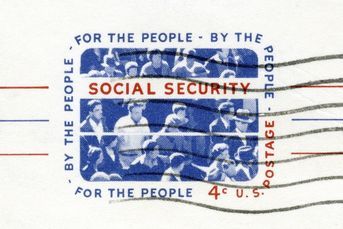Investors, don’t lose sleep over the midterm elections

Historically speaking, the worst is behind us.
The early October jolt of stock market volatility seemed to awaken investors briefly from a relative sense of calm and reminded us that pullbacks and downside risk are part of the price to be paid for upside performance.
Despite just about every investing fear imaginable, any long-term snapshot of stock market performance will illustrate a persistent bias toward positive performance. Whether looking back 10, 50, 100 years or more, the basic economics of investing in a broad range of publicly traded companies is difficult to deny.
Of course, we also know that looking at the 100-year ascent of the Dow Jones Industrial Average provides little comfort to somebody who is watching their retirement savings drop by 3% or more in a single day.
On the subject of whether more market shake-ups are ahead, most financial advisers are rightly positioning the possible impact of the midterm elections along the lines of: “We’re long-term investors” or “We don’t have a crystal ball.”
And considering the markets’ nonreaction to the unexpected election of President Donald J. Trump, maybe there is something to be said for not worrying about it.
But if that won’t suffice, just consider how three possible midterm election scenarios could affect the markets.
The most likely scenario shifts control of the House of Representatives from Republicans to Democrats.
Because this is considered most likely, it is the outcome that would be the least jarring to the financial markets initially.
Long term, a divided government usually means little gets done legislatively.
If the Democrats gain control of both houses of Congress or the Republicans retain control, the long-term outlook either takes the shape of uber-gridlock or more of the same, legislatively speaking.
In terms of market impact, consider that since 1949, the third quarter of a midterm election year has averaged the second-worst performance of the 16 quarters making up a four-year presidential term.
The S&P 500 Index averaged a gain of 0.1% during those quarters. The worst quarter in the cycle is the second quarter of a midterm year, averaging -2.8%.
In other words, the worst is behind us, historically speaking.
The good news is the fourth quarter of a midterm election year has averaged a gain of 8%, and the first quarter of the following year has averaged a gain of 7.5%.
(More: Divided we stand: How financial advisers view President Trump)
Of course, we all know past performance is no guarantee …
But beyond any anticipated reactions from financial markets, there is the pragmatic reality of how the election outcome will affect the financial services industry.
As InvestmentNews senior reporter Mark Schoeff Jr. laid out in last week’s cover story, if Democrats take control of the House, that could alter the course for such major issues as the Securities and Exchange Commission’s proposed advice rule, additional tax reform and retirement savings.
Rep. Maxine Waters, D-Calif., the top Democrat on the House Financial Services Committee, and the ranking members of other committees showed their hand in a Sept. 12 letter to SEC chairman Jay Clayton. The letter criticized the agency’s Regulation Best Interest as too weak.
Mark also reported on Democratic opposition to further tax cuts in the vein of those already passed, and the potential positive effect on retirement savings policies. If Democrats take the house, expect Rep. Richard Neal, D-Mass., to become chairman of the House Ways and Means Committee. He is a vocal advocate of measures that encourage Americans to save more for retirement.
As is often the case, there is much at stake, which is why we vote.
But what should not be keeping investors awake at night is how whatever happens on Nov. 6 could disrupt a solid, long-term investing strategy.
Learn more about reprints and licensing for this article.








